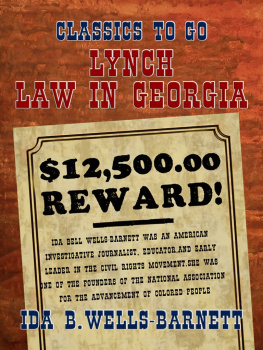First published in 1978
This edition first published in 2016
by Routledge
2 Park Square, Milton Park, Abingdon, Oxon OX14 4RN
and by Routledge
711 Third Avenue, New York, NY 10017
Routledge is an imprint of the Taylor & Francis Group, an informa business
1978 Correlli Barnett
All rights reserved. No part of this book may be reprinted or reproduced or utilised in any form or by any electronic, mechanical, or other means, now known or hereafter invented, including photocopying and recording, or in any information storage or retrieval system, without permission in writing from the publishers.
Trademark notice: Product or corporate names may be trademarks or registered trademarks, and are used only for identification and explanation without intent to infringe.
British Library Cataloguing in Publication Data
A catalogue record for this book is available from the British Library
ISBN: 978-1-138-90784-3 (Set)
ISBN: 978-1-315-67905-1 (Set) (ebk)
ISBN: 978-1-138-93274-6 (Volume 2) (hbk)
ISBN: 978-1-315-67903-7 (Volume 2) (ebk)
Publishers Note
The publisher has gone to great lengths to ensure the quality of this reprint but points out that some imperfections in the original copies may be apparent.
Disclaimer
The publisher has made every effort to trace copyright holders and would welcome correspondence from those they have been unable to trace.
Bonaparte
First published by
George Allen & Unwin Ltd
Ruskin House, Museum Street
London WCIA ILU
This book is copyright under the Berne Convention.
All rights are reserved. Apart from any fair dealing
for the purpose of private study, research, criticism or
review, as permitted under the Copyright Act, 1956, no
part of this publication may be reproduced, stored in a
retrieval system, or transmitted, in any form or by any
means, electronic, electrical, chemical, mechanical,
optical, photocopying, recording or otherwise, without
the prior permission of the publishers to whom all
enquiries should be addressed.
Correlli Barnett 1978
ISBN 0 04 994011 x
This book was designed and produced by
George Rainbird Limited
36 Park Street
London WIY 4 DE
Picture Research: Georgina Dowse
Design: Yvonne Dedman, Patrick Yapp
Maps: Tom Stalker Miller
Index: Irene Clephane
The text was set and printed
and the book bound by
Jarrold & Sons Limited, Norwich, Norfolk
Colour plates and jacket originated and printed by
Gilchrist Bros. Ltd., Leeds, West Yorkshire
Printed in England
British Library Cataloguing in Publication Data:
Barnett, Correlli
Bonaparte.
1. Napoleon I, Emperor of the French
2. France Kings and Rulers Biography
944.050924 DC 203 7730598
ISBN 0049440111x
Other books by Correlli Barnett:
The Desert Generals, 1960
The Swordbearers, 1963
Britain and Her Army, 1970
The Collapse of British Power, 1972
Marlborough, 1974
(endpapers) From The Times Saturday, 1 June 1799
reporting setbacks in Europe for French forces.
Photo: Derrick Witty
(frontispiece) the first hero of the
romantic movement: Bonaparte by Andrea
Appiani. Accademia Brera, Milan
In the first place, I wish to express my particular gratitude to John Terraine, Antony Brett-James and Felix Markham who kindly read the typescript and saved me thereby from many errors and omissions.
I would like to express my appreciation of the helpfulness and courtesy of the staffs of the London Library, the Library of the Royal United Services Institute for Defence Studies, the Central Library of the Ministry of Defence, the University of East Anglia Library, the British Library, the Bibliothque Nationale in Paris, and of Monsieur Jean Humbert of the Muse de lArme, Paris.
I am indebted to Miss Georgina Dowse for her resourcefulness in finding illustrations, together with Miss Fiona Roxburgh; to General B. P. Hughes and Brigadier R. G. S. Bidwell for their advice on military organization and tactics, with especial reference to artillery; to Mr John Hadfield, Mr John Bright-Holmes and Mr Paul Brown for their shrewd advice and criticism; and to Mr Tom Stalker Miller, who turned my rough sketches into exemplary maps.
And once again I must thank my wife Ruth for typing the first draft, for her helpful criticisms of the style and content of the narrative, and for being in all ways the perfect chief-of-staff.
Italian Campaigns 17967, The Battle of Arcola 1796, The Battle of Rivoli 1797, The Marengo Campaign 1800
Southern Germany and Austria 1805 and 1809, The March to Ulm 1805, The Battle of Austerlitz 1805, The Battle of Wagram 1809
Northern Germany 18067 and 1813, The Battle of Eylau 1807, The Battle of Friedland 1807, The Battle of Leipzig 1813
The Russian Campaign 1812, The French Campaign 1814, The Waterloo Campaign 1815, The Battle of Waterloo
A T ABOUT 5 P.M. ON 8 APRIL 1792, Easter Day, Lieutenant-Colonel Napoleone Buonaparte, second-in-command of a battalion of republican volunteers on duty in the Corsican city of Ajaccio, heard sudden yells and shots from the nearby Rue de la Cathdrale. Ordering half a dozen of his officers to follow him, he ran towards the Cathedral. It being Easter Day, this was packed with the devout and therefore, in the opinion of Lieutenant-Colonel Buonaparte, who was a fervent Jacobin and hater of religion, the reactionary. In front of the Cathedral he found a hostile mob, some of whose members were brandishing muskets they had just seized from a platoon of his volunteers. Buonaparte was not yet twenty-three: about five foot six and a half inches in height, lean but thick-shouldered; a fine roman head, straggly brown hair, olive skin, pale blue-grey eyes, a curled lip above a jutting chin. Without hesitation he stepped up to the crowd and demanded the muskets back. An animated argument in the local Italian patios ensued. Then more anti-republican townsfolk poured out of the Cathedral, their hostility to the volunteers newly fortified by their devotions. Anger crackled into fresh violence, and a musket-shot dropped one of Buonapartes officers dead. Buonaparte and his remaining companions bolted for safety into a nearby house, later to make their circumspect way back to battalion headquarters in the Sminaire.


















